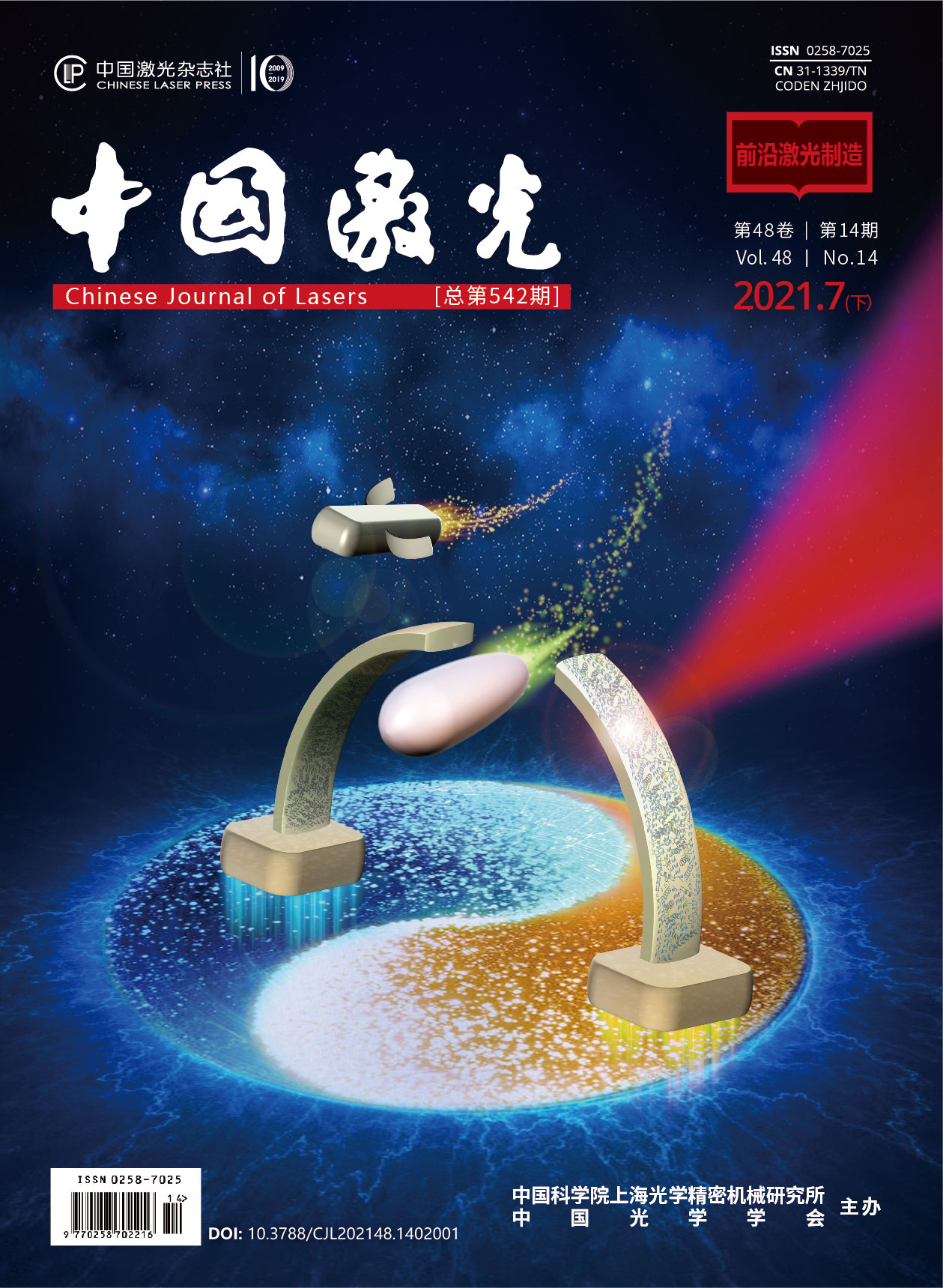飞秒激光烧蚀面齿轮材料的形貌特征研究  下载: 818次
下载: 818次
Objective Face gear has been widely used in aviation, construction machinery, and other industries. With advancements in science and technology, the accuracy of face gear consequently demands higher requirements. Machining has met a certain bottleneck; therefore, femtosecond laser microcorrection face gear has been proposed as a new machining technology. Herein, the morphological characteristics of femtosecond laser ablated face gear material, such as pit diameter and depth, are investigated to provide a technical basis for improving the precision-machining quality of face gear.
Methods FemtoYL-100 all-fiber laser is used to generate 828 fs laser to ablate 18Cr2Ni4WA. A digital three-dimensional (3D) video microscope is used to observe the micromorphology, diameter, and depth of ablated pits. The experiment of single pulse femtosecond laser ablation gear material is conducted. Combined with the theoretical and experimental results, the ablation threshold is obtained from the quantitative relationship between the ablation pit diameter and laser power. Furthermore, the material absorption coefficient is obtained from the quantitative relationship between the ablation pit depth and laser power. As a result, the theoretical ablation model of multipulse femtosecond laser face gear material is established, and the effects of energy accumulation and variable defocusing are considered. The effect of variable defocusing amount suggests that with the increase in the number of pulses, the depth of ablation pits increases and the defocusing number of a single pulse femtosecond laser changes continuously. It implies that the defocusing amount of the central position of the laser spot changes with the change in the number of pulses. According to the theoretical model, changing the number of pulses and laser power, Matlab is used to simulate the change in the diameter and depth of femtosecond laser ablation pits. Then, the multipulse femtosecond laser ablation experiment is conducted to verify the accuracy of the theory.
Results and Discussions According to the linear relationship between the square of the diameter of the ablation pit and the logarithm of laser power (Fig.5), the ablation threshold of 18Cr2Ni4WA is 0.1383 J/cm 2. According to the linear relationship between the depth of ablation pit and the logarithm of laser power (Fig.6), the absorption coefficient of 18Cr2Ni4WA is 0.5188 μm -1. The results showed that when the pulse number is greater than 20, the diameter of ablation pits tends to be stable (Fig.10), and the energy accumulation coefficient is 0.9967. High power laser produced more liquid materials; thus, liquid materials will remain at the bottom or wall of the ablation pits and solidify to form molten materials, resulting in an uneven morphology of the ablation pits (Fig.11). With an increase in laser power, the residual molten material in the pits ablated by single-pulse femtosecond laser begins to appear, changing from a stripe structure to an irregular hole structure, mainly located at the bottom of the pits (Fig.12(a)). In the multipulse femtosecond laser processing, when the vaporized material pushes the liquid material away from the ablation pit, the liquid material, which fails to discharge the ablation pit, solidifies into a larger convex structure (Fig.12 (b)). The high temperature of the vaporized material and the accumulated energy in the material will lead to the second ablation of the material on the surface of the ablation pit, forming a smaller convex structure on the surface of the ablation pit (Fig. 12(b)). The smooth and highly reflective surface of the convex structure will make it difficult to be ablated and hinder the discharge of subsequent materials (Fig. 12(b)). With an increase in laser power, the residual melt in the multipulse ablation pits will increase, the quality of pit morphology will decrease, and the convex structure in the pits will be higher than the material plane (Fig.13). The multipulse femtosecond laser ablation pits with laser power of 1 W have better quality (Fig.13). However, when the pulse number is greater than 20, the second pulse number has no obvious effect on the quality of the pit morphology (Fig.13). By comparing the experimental and theoretical values of ablation pit depth under different power and pulse number, it can be seen that the theoretical model is reasonable, and the residual melt in the ablation pit generated by high power multisecond femtosecond laser will reduce the ablation pit depth (Fig.14). Under the condition of ensuring ablation depth and machining quality, it is more suitable to set the laser power of machining face gear material to 1 W (Fig.14).
Conclusions Herein, the ablation threshold and material coefficient of 18Cr2Ni4WA are determined. The quantitative relationship between the ablation pit diameter and pulse number is also determined. Furthermore, the quantitative relationship between the ablation pit depth and pulse number is established and verified. Based on the ablation depth and machining quality, it is found that the machining effect of multipulse femtosecond laser with 1 W laser power is the best. It provides parameters and theoretical references for femtosecond laser surface modification technology.
林嘉剑, 明瑞, 李学坤, 赖名涛, 马玉龙, 明兴祖. 飞秒激光烧蚀面齿轮材料的形貌特征研究[J]. 中国激光, 2021, 48(14): 1402017. Jiajian Lin, Rui Ming, Xuekun Li, Mingtao Lai, Yulong Ma, Xingzu Ming. Study on Morphology Characteristics of Femtosecond Laser-Ablated Face Gear Materials[J]. Chinese Journal of Lasers, 2021, 48(14): 1402017.







